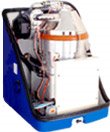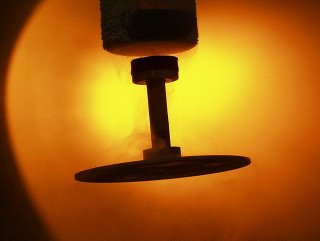
Using oil to produce flexible nano enabled polymers that generate electricity from the sun is certainly a higher and better use than burning such complex hydrocarbons in cumbustion engines. This is the innovation upon which Massachestts based Konarka is building its company.
According to the company, "Konarka’s products take light in and deliver power out. This direct current (DC) electrical energy can be used immediately, stored for later use, or converted to other forms of energy. Because Konarka’s technology utilizes a wider range of the light spectrum than conventional solar cells, all visible light sources — not just sunlight — can be used to generate power."
With funding from investors Silicon Valley Bank, Chevron, the Massachusetts Technology Collaboartive and a host of venture capital firms, Power Plastic
(tm) might actually get to market.
Guess who is getting a first crack at this new technology? Why the military of course! Currently Plastic Power is being developed for portable, electric-generating quonset huts. Other military applications include battery charging on the battlefield, remote power for unmanned vehicles and soldiers, and solar-powered sensor networks.
Konarka also envisions using the power-generating capabilities of Power Plastic
(tm) to structures including tents, awnings, roofs, windows and window coverings. And they plan to be the power supply of choice for consumer electronics such as cell phones and portable music players as well as business products such as PDAs, and laptops.
There are no hard specs or effeciency analyses on the company's website as far as I can tell.
The big breakthrough lies in the claim that the photo reactive material is lightweight, coatable, flexible, more versatile, printable and uses ubiquitous roll-to-roll, easy to scale manufacturing technology. All this is supposed to translate to truly affordable photvoltaics.
No wonder they won the 2005 Popular Mechanics Breakthrough Award among numerous others.
Bring it on!
http://www.konarka.com/

















